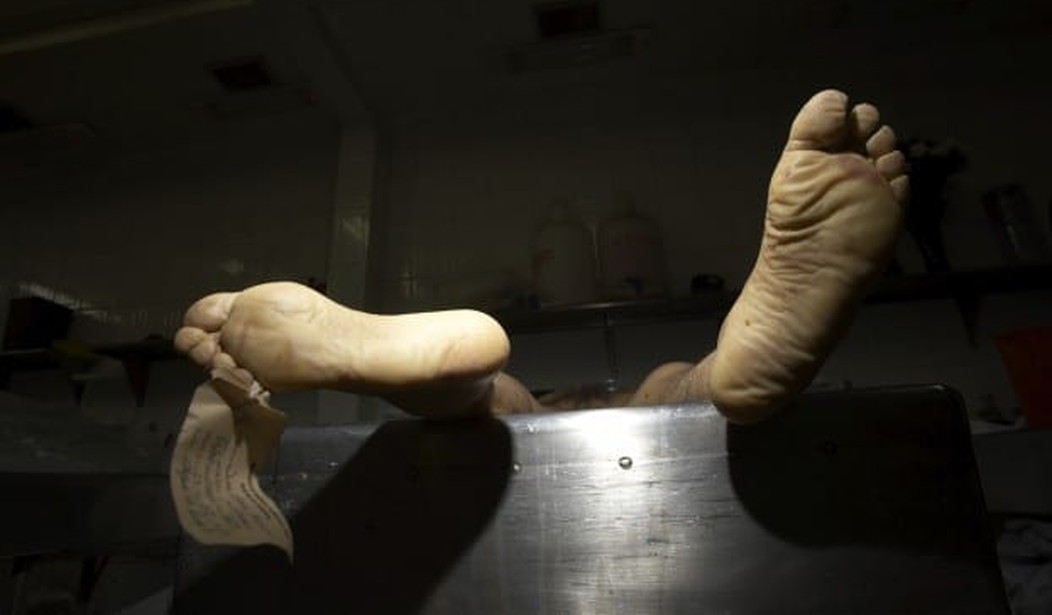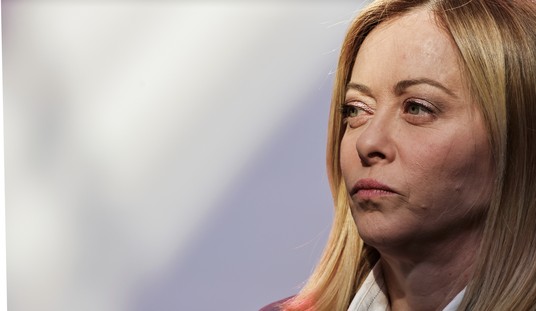It was once said that the moral test of government is how that government treats those who are in the dawn of life, the children; those who are in the twilight of life, the elderly; and those who are in the shadows of life, the sick, the needy and the handicapped.
Hubert H. Humphrey
It isn’t often that I open a story with a quote from a liberal but, as a Catholic, I have a great deal of affinity for Hubert Humphrey. As you read this you’ll see just how far the modern left has strayed from the liberalism of FDR, John Kennedy, and Lyndon Johnson.
Let’s stipulate in the beginning that modern medicine is a business. You don’t have a kindly doctor showing up at your home at 2am to treat a sick child and accept labor or chickens in return. Our hospitals are run by hard edged MBAs. Within the profession we’ve exchanged the kind and compassionate Dr. Ben Casey for the arrogant and abusive Dr. Greg House who knows best and your wishes be damned as the operating model.
As the saying goes, the difference between God and a doctor is that God doesn’t think he’s a doctor.
It is well known that about 30% of medical expenditures occur in the last year of life. I view this a tautological dodge because you usually don’t need a lot of medical care until you are near death and as no one knows which is the last year of their life it is a pretty useless metric… unless you can designate with certainty the last year of a patient’s life and then set out to minimize costs during that period.
Enter the Liverpool Care Pathway for the dying patient courtesy of the British National Health Service.
In the first stage of the pathway, the multi-professional team caring for the patient have to agree that all reversible causes for the patient’s conditions have been considered and that the patient is in fact dying. The assessment then makes suggestions for what palliative care options to consider and whether non-essential treatments and medications should be discontinued. However, the pathway is not a “one-way-street” and if no further deterioration of the patient’s condition occurs, pathway-based palliative care is halted and all previous treatments are resumed. This occurs for about 3% of patients put on the pathway. The pathway recommends that the carers assess how well the patient can communicate and talk to their family, to check that they understand what is happening and see if their religious and spiritual needs are being addressed. The carers are also expected to discuss the plan of care with the patient and their family.
The programme provides suggestions for treatments to manage any pain, agitation, respiratory tract secretions, nausea and vomiting, or shortness of breath (dyspnoea) that the patient may experience] Staff are pre-authorised to give such interventions as required without further authorisation, usually by subcutaneous injection, so that symptoms can be addressed as soon as needed, without further delay.
On the surface the Pathway looks like a rational way of dealing with patients at the end of life, when comfort is of more use than medical care and a competent patient is under no obligation to accept extraordinary measures to prolong life. Pope John Paul II, himself, decided to decline heroic methods to extend his life when it became obvious that he would not recover. The operative terms here are “competent” and “accept.”
In practice it is an entirely different set of facts. It is a roach-motel for patients deemed to have a terminal condition. They check in but they don’t check out.
Because the Liverpool Pathway is set up to ration care and minimize costs in that last year of life, there are perverse incentives. Primary among them is to aggressively identify patients who aren’t quite terminal and help them out a bit. As we know, when men start assuming the role of God, very little good comes out of it.
An elderly woman died alone after doctors failed to tell relatives they were ending her life on the controversial Liverpool Care Pathway.
Olive Goom, 85, passed away with no one by her side after medics neglected to consult with her family about her treatment at Chelsea and Westminster Hospital.
…
As Miss Goom lay dying alone, staff reassured relatives on the phone just hours before her death that there was no urgent need to visit – even though doctors had already removed tubes providing vital food and fluids.Her family discovered that she had died only when her niece went to visit her and found she was already being prepared for the mortuary. They said last night that they will never be able to stop feeling guilty that no one was there in her final hours.
This type of misadventure seems to be much more the norm than anyone would like to believe as the Liverpool Care Pathway has become an assembly line of death rather than a hospice-like terminal care program.
NHS doctors are prematurely ending the lives of thousands of elderly hospital patients because they are difficult to manage or to free up beds, a senior consultant claimed yesterday.
Professor Patrick Pullicino said doctors had turned the use of a controversial ‘death pathway’ into the equivalent of euthanasia of the elderly.
He claimed there was often a lack of clear evidence for initiating the Liverpool Care Pathway, a method of looking after terminally ill patients that is used in hospitals across the country.
…It can include withdrawal of treatment – including the provision of water and nourishment by tube – and on average brings a patient to death in 33 hours.
There are around 450,000 deaths in Britain each year of people who are in hospital or under NHS care. Around 29 per cent – 130,000 – are of patients who were on the LCP [My emphasis].
Professor Pullicino claimed that far too often elderly patients who could live longer are placed on the LCP and it had now become an ‘assisted death pathway rather than a care pathway’.
He cited ‘pressure on beds and difficulty with nursing confused or difficult-to-manage elderly patients’ as factors.
More tragic is that are those instances in which the patients selected to die really aren’t terminal.
Mrs Fenton, from East Sussex, is still alive and “happy” nine months after doctors declared she would only survive for days, withdrew her antibiotics and denied her artificial feeding, her daughter, Christine Ball, said.
…
Mrs Fenton was admitted to hospital suffering from pneumonia. Although Mrs Ball acknowledged that her mother was very ill she was “astonished” when a junior doctor told her she was going to be placed on the plan to “make her more comfortable” in her last days.On Jan 19, Mrs Fenton’s 80th birthday, Mrs Ball said her mother had lost “an awful lot of weight” but was feeling better, and told her she “didn’t want to die”.
But it took another four days to persuade doctors to give her artificial feeding, Miss Ball said.
Mrs Ball said the fight to save her mother had been made harder by the Mental Capacity Act. “I was told that we had no rights, and food and hydration were classed as treatment, which meant they had the right to withhold feeding. It gave a doctor the power to play god with my mother’s life,” she said.
Mrs Fenton is now being looked after in a nursing home near her daughter’s home.
One can only guess at the number of survivable cases there are among the 130,000 Britons currently in a hospital and marked for death.
So this system really sucks. If you are interested there is a grassroots rebellion going oni in Britain against this appalling system check out this website. But what does it mean here?
Under Obamacare we are on the glidepath to a similar progam being adopted here . For all those who derided Sarah Palin and the “death panels” she was absolutely right. Now a former senior official in the Obama regime has come out in favor of a system modeled on the Liverpool Care Pathway.
No one wants to lose an aging parent. And with price out of the equation, it’s natural for patients and their families to try every treatment, regardless of expense or efficacy. But that imposes an enormous societal cost that few other nations have been willing to bear. Many countries whose health care systems are regularly extolled — including Canada, Australia and New Zealand — have systems for rationing care.
Take Britain, which provides universal coverage with spending at proportionately almost half of American levels. Its National Institute for Health and Clinical Excellence uses a complex quality-adjusted life year system to put an explicit value (up to about $48,000 per year) on a treatment’s ability to extend life.
At the least, the Independent Payment Advisory Board should be allowed to offer changes in services and costs. We may shrink from such stomach-wrenching choices, but they are inescapable.
As we delegate more and more responsibility for our medical care to the government, the government will increase its authority over the type and amount of care that we can receive. Why we think a government panel will be more successful at deciding who lives and who dies than a government panel making investment decisions in solar panels or electric cars escapes me.
A system that arguably started out as a humane system in Britain to ease the final days of the terminally ill has devolved into a financially driven program focused on eliminating patients to save money and reduce occupancy rates.
What makes this more unfathomable, and truly accentuates Pope John Paul II’s various sermons against what he termed the Culture of Death, is that the liberal left, that part of our political spectrum which touts itself as compassionate and caring, is the most aggressive in offing those who Hubert Humphrey said were in the dawn and dusk of life: the unborn and the physically infirm. Apparently their interest in those in the shadows only extends to the extent to which they can be inveigled to vote for Democrat politicians.















Join the conversation as a VIP Member